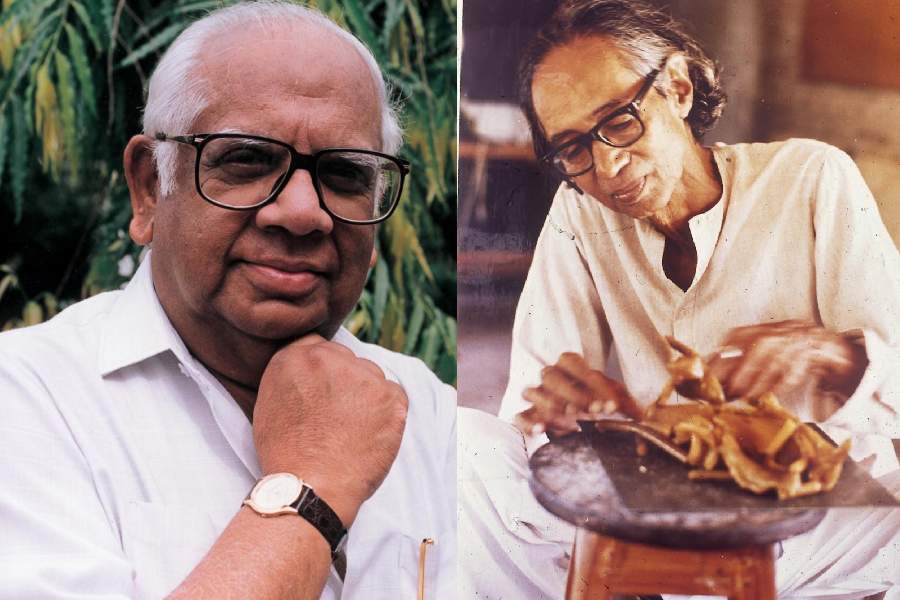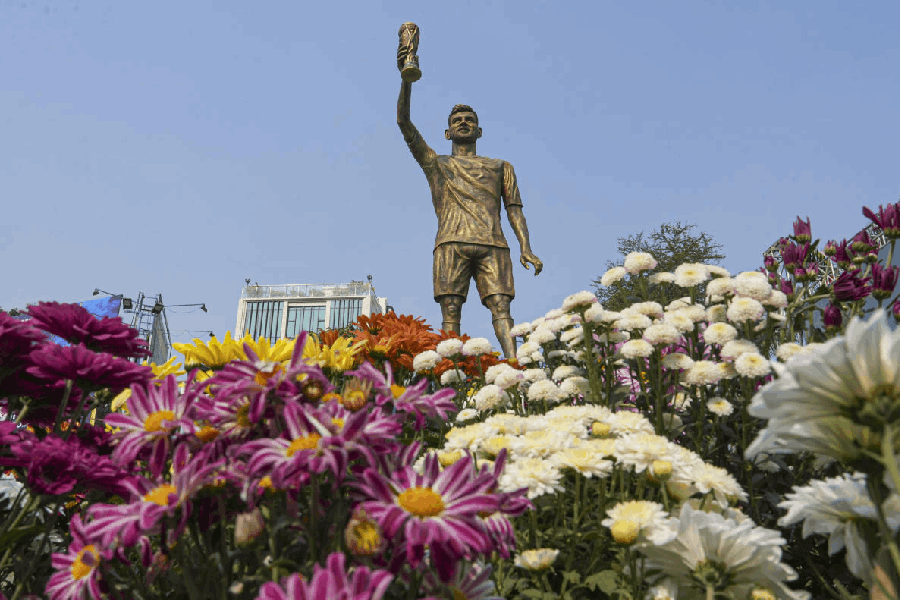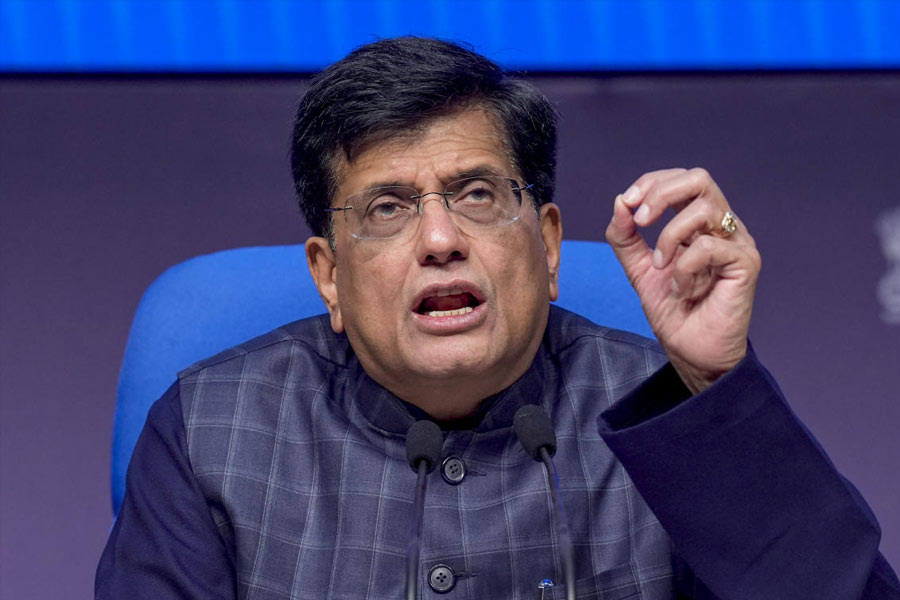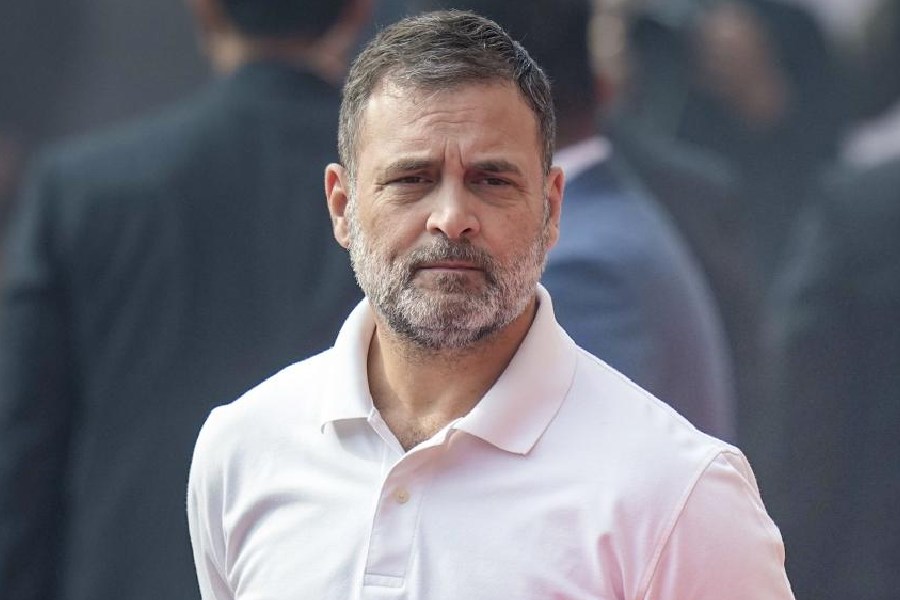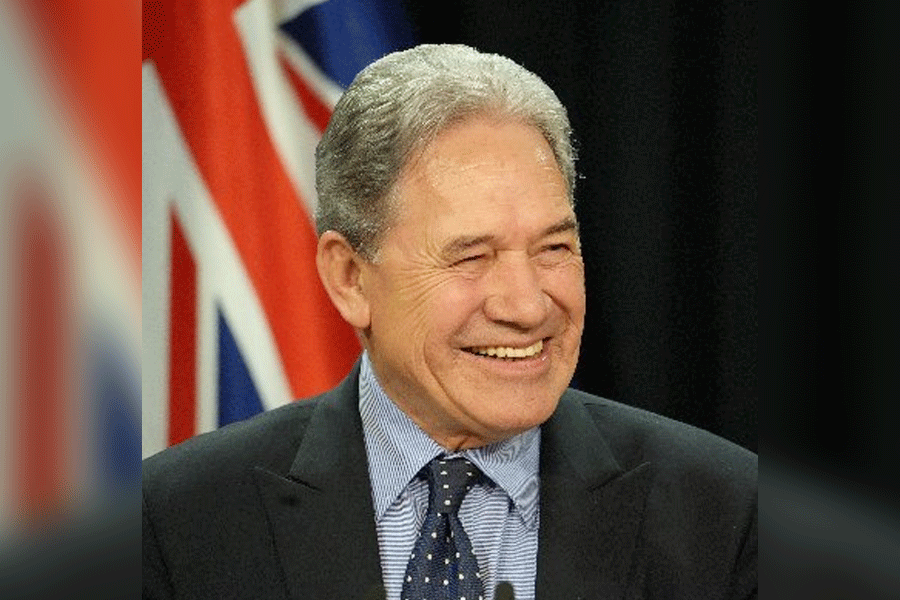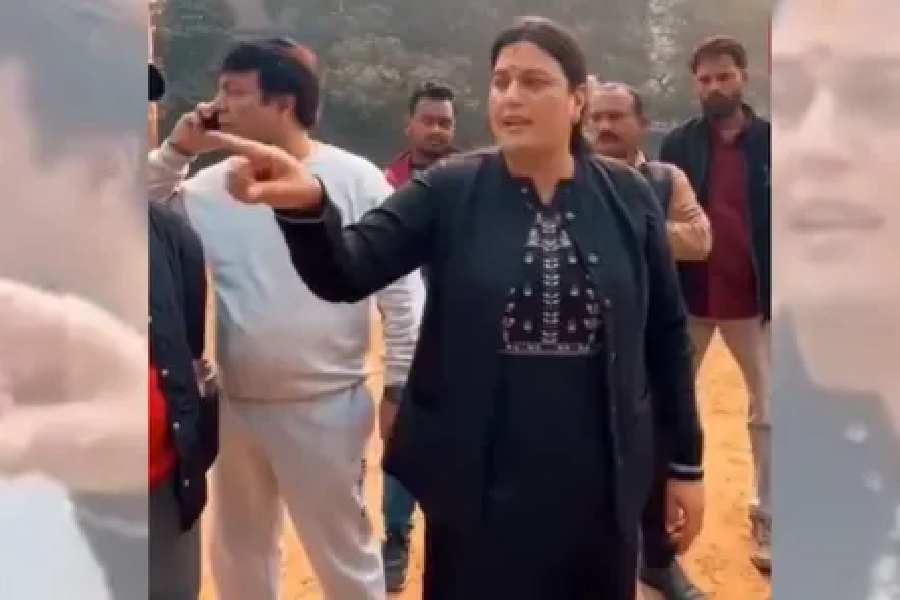ust around the same time that news came of our very singular Chief Justice of India, D.Y. Chandrachud, making a visit, with his wife, to the Somnath temple in Gujarat, I was absorbed in a favourite activity: reading up old diary notes of mine to see what I was doing ten, twenty, thirty years ago around the date of my reading them. And I was amused to find ‘Somnath’ occurring in my diary for January 2005.
I too was travelling in January 2005, and with my wife. We had come to Calcutta just about a month earlier that year on what was to be a memorable five-years’ stay which did include some places of worship, notably Dakshineshwar. But on January 21, 2005, we had gone by train not to a temple city but to Bolpur on our first of several visits to that town and to Santiniketan at the invitation of the former MP of Bolpur and the then Speaker of the Lok Sabha, Somnath Chatterjee. He had set up a cultural complex in Bolpur, not surprisingly named ‘Gitanjali’, and he had done me the honour of asking me to inaugurate it. The towering, large, convivial Marxist leader was at the railway station to receive us. Going by his appearance alone, anyone unfamiliar with him would have said this was a prosperous merchant, owning a few mills, and once owned several rolling acres of fertile land until the Left Front government took over almost all of them under land reforms schemes. Such a person would not have associated him with membership of the Communist Party of India (Marxist). “Welcome, Rajyapalji,” he said, with a twinkle in his eye, as we alighted from the train. Sixteen years older than I, the ‘ji’ in his greeting had more humour in it than protocol. And with that started a conversation that proceeded the whole day, educating Tara and me on Bolpur’s history, on Santiniketan (of course), but most pertinently on Tagore. Now, there is virtually not a single Bengali I know who does not know her or his Tagore with an immediacy, an ardour amounting to a passion. But Somnathbabu’s knowledge of the great Bard’s oeuvre was ‘something else’. He spoke of Tagore’s influence on him from his childhood days as having been foundational, making his Marxism seem almost like a detachable overlay. He could, of course, cite from Tagore’s poetry with reflexive ease.
Did being Somnath have any impact on the leader? I would not know. Was he Hindu at heart, atheist of mind? I would not know. More pertinently, I did not care. Somnath Chatterjee was a warm human being who had dedicated his life to social justice. Would the great deity at Somnath want more of any human bearing his name?
I could not but marvel at my host’s intellectual integrity — having stayed clear of the Hindu Mahasabha beliefs of his distinguished father, Nirmal Chandra Chatterjee, and then not allowing his firm grounding in Left politics from coming in the way of his aesthetic and literary affiliations. He was, I could see, first, the elected representative in the Lok Sabha of the people of Bolpur and, second, Speaker of that House, a position which seemed so clearly for him to make him the shared asset of the whole House. How a person, the same person, can be true to his personal belief systems and be rigorously objective in the discharge of public office was exemplified by Somnath Chatterjee. He was Marxist enough to found a memorial lecture in Parliament honouring the great communist leader, Hiren Mukherjee (a series inaugurated by Amartya Sen that has unfortunately fallen into desuetude), but once in his high seat, he was the Hon’ble Speaker whom his own party could not take for granted and all MPs could trust to be impartial. This scrupulous objectivity led to an expulsion from his party when, in 2008, defying his party’s whip to all its MPs, he opted to not vote against the Manmohan Singh government and continue to preside over the House as a neutral Speaker.
Once an MP is elected Speaker, her or his party must forfeit all claims on that person’s political affiliation, and the Speaker must slough off all partisan raiments. Somnath Chatterjee exemplified this principle and though that cost him his place under the Marxist sun, it established a most wholesome nostrum.
My diary entry for January 21 is about the second Somnath, also of Left persuasion, Somnath Hore, the master sculptor who lived in Santiniketan. When Tara and I called on him, he was in bed but totally ‘with it’. He took my breath away when, bending, he dragged out from under his bed a work of his. I will excerpt my diary entry: “Call on Somnath Hore. At 84 he is clear of mind and speech. He shows me a piece of sculpture in black bronze. It depicts a human, an animal — dog — a tree, a bird, all dead, killed by a nuclear bomb. It is powerful beyond words, a masterpiece. Who am I to compare the Greats but I feel the composition is ahead of Picasso’s Guernica. Talking of the nuclear plan, he says ‘We are mad.’ And then he gives us a rare gift — another sculpture by him — of a Hindu and Muslim united in death. I cannot check my tears at his generosity. I say to him, ‘I do not deserve this’, to which his daughter says, ‘How do you know?’ I cannot respond to that.” The piece reminded me of those Hindus and Muslims and Sikhs who risked their lives saving men and women from the hands of marauding men of their own faith, some of them dying in the process.
The piece which he called the “nuclear winter” showed a stark desolation, in which specimens of human, animal, bird and plant life all lay dead, mute in joint annihilation. There was a chill to the work. A freeze that was also searing. The piece was not large, no bigger than a small suitcase’s size and would have been a great work to place under a glass case for visitors to see on returning to Calcutta, I wrote to Natwar Singh, the then minister for external affairs, suggesting that the Government of India acquire it or the UNO be encouraged to do so. Art does not have the same draw for foreign affairs as security does, and the idea did not go further. I should, I now realise, have written to the first Somnath, Somnath Chatterjee. He would have acquired it for Parliament House, I am sure.
The two Somnaths who filled my January 20-21 of 2005 were men of what can only be called ‘human values’ and skills to match. In our singularly cold and calculating times, these two examples of ‘Somnath’ from Bolpur-Santiniketan come, in Tagore’s great phrase, like karuna dhara, a shower of mercy.

